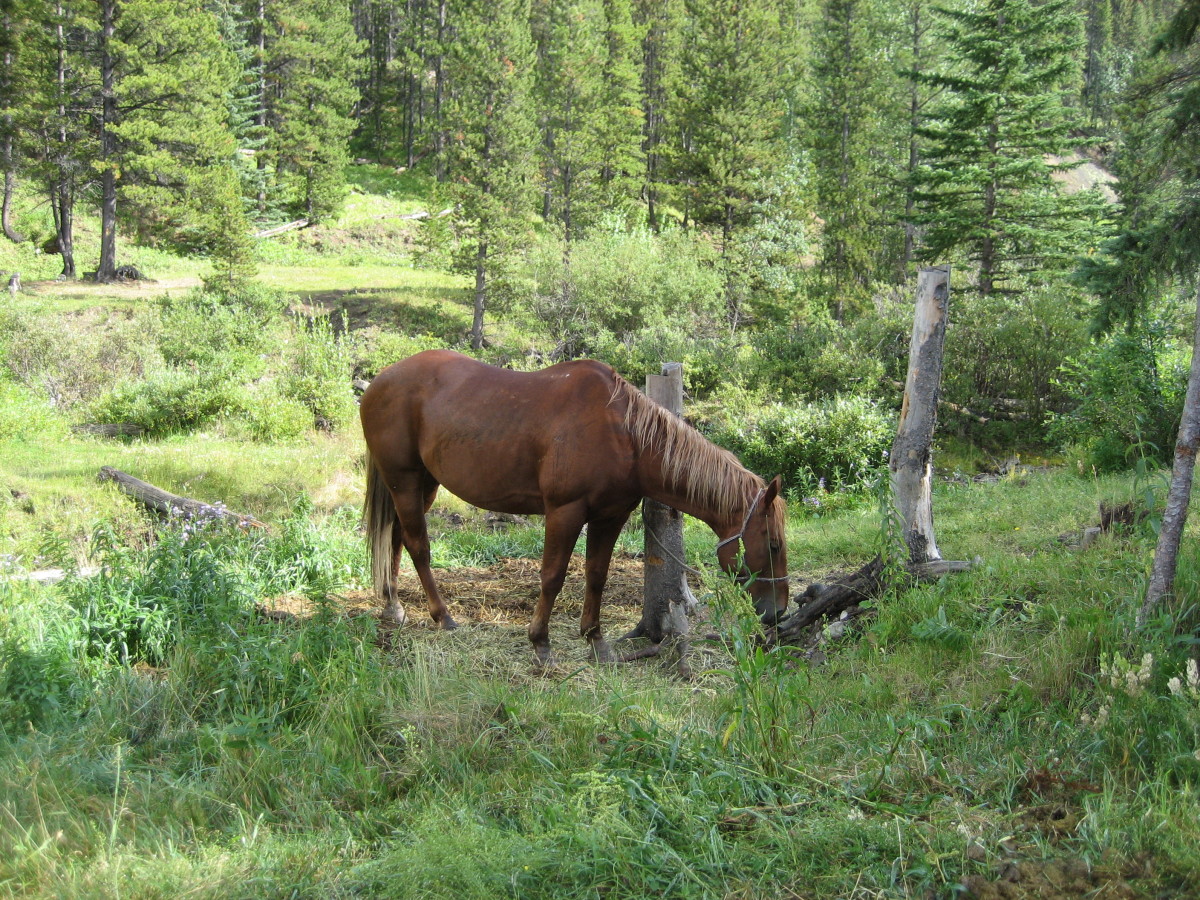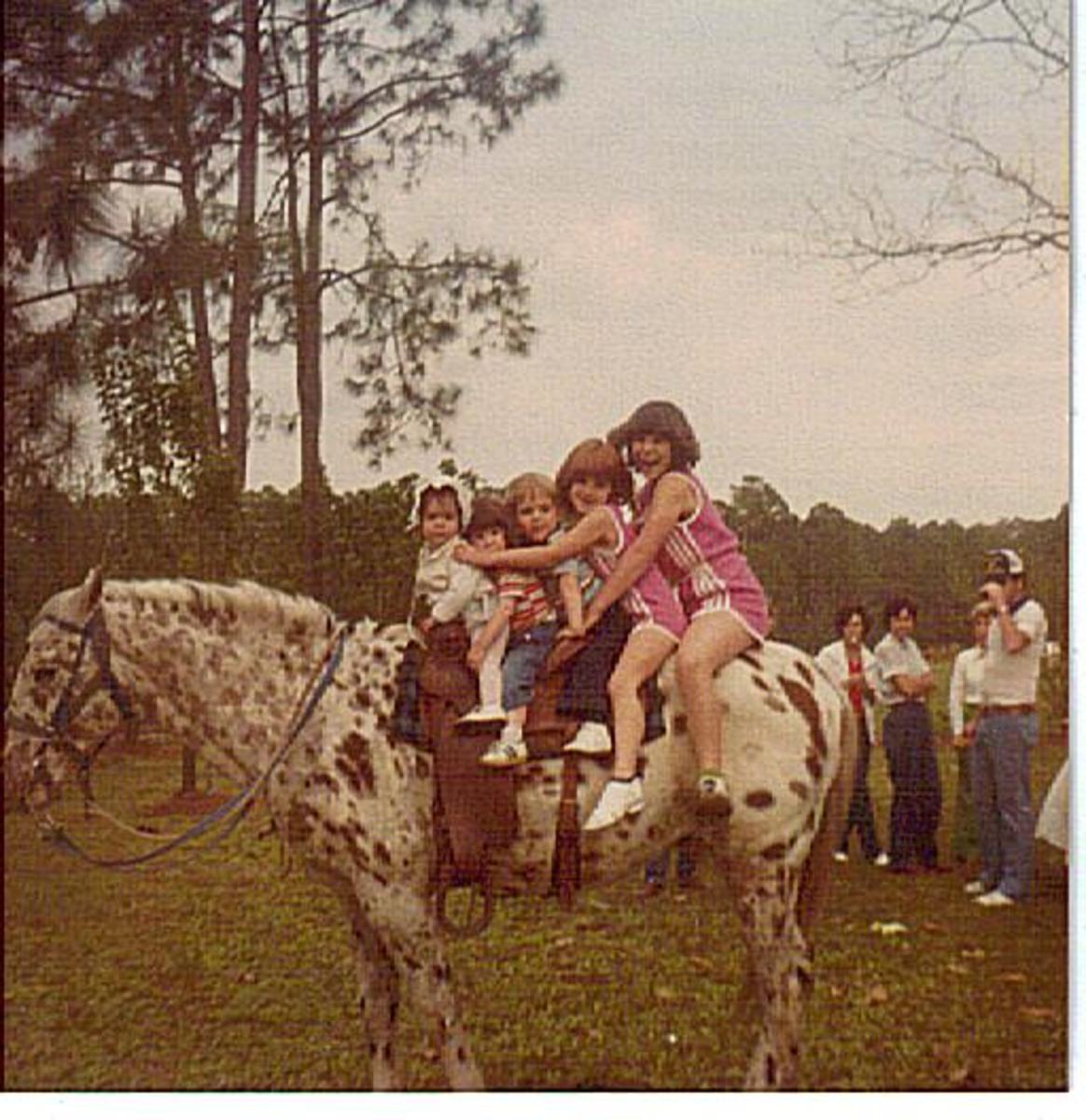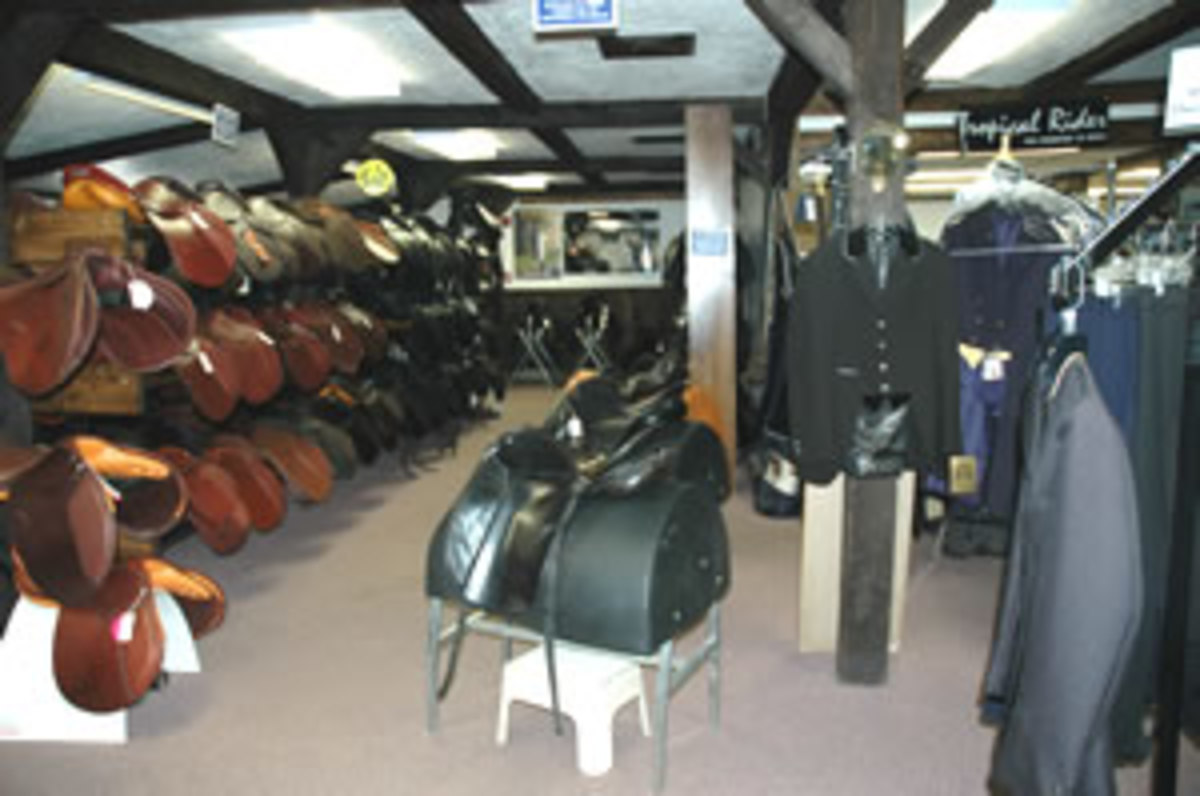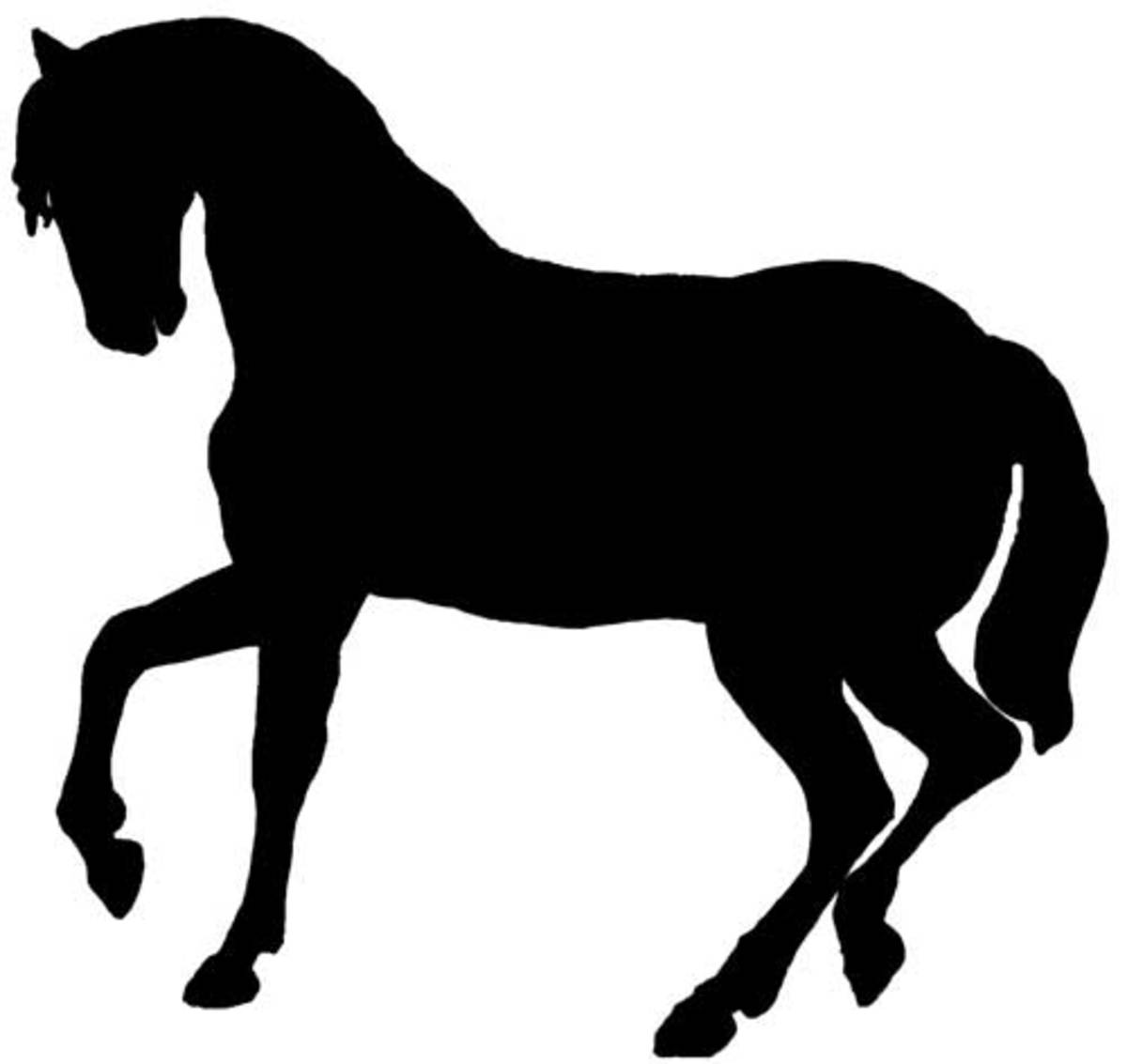Common Horse Ailments
Horse Health and Disease
Horses are large, but surprisingly fragile creatures. They can and do get sick, and even a casual rider should learn to recognize the signs of some of the most common ailments and illnesses of the horse.
It's wise to know when a horse might legitimately not feel up to being ridden that day and also whether an illness might be contagious to other horses - or even to humans.

Colic
Colic is not a disease but a symptom. It refers to stomach pain, which can be quite serious in the horse.
There are two kinds of colic - gas colic and impaction colic. Gas colic is just what it sounds like - the animal has extremely painful gas. A horse suffering from gas colic can easily be treated with a mild painkiller and by encouraging it to walk and move around.
Impaction colic is when the horse's intestine becomes blocked. One common cause is sand ingestion. Horses kept on sandy soil need to be given a supplement that prevents the sand from building up and helps keep it moving through their system. It is impossible to prevent horses from ingesting some sand and soil when grazing. A 'twist' is when the intestine ends up doubling over itself, often as a result of reaction to pain such as extreme rolling. In many cases horses with a twist die or have to be euthanized. Impaction colic often requires expensive surgery that does not always work.
Signs of colic in a horse include the violent rolling previously mentioned, but the first signs are milder. A colicing horse will look at its own stomach and possibly kick up towards its belly. A stethoscope will reveal an absence of normal gut noises, especially if there is an impaction.
Mares about to go into labor may also show similar behavior and some mares appear to experience 'colic' when they are in heat.
Lameness
Lameness is, of course, a catchall term for any injury, illness or complaint that causes a horse to limp or become uneven in its gait. In some regions the word 'off' is used, especially if the lameness is minor.
It is normal for a horse, when standing at ease, to rest one hind leg by lifting it so that only the toe of the hoof touches the ground. Although horses do not do this all the time, they tend to do it when particularly relaxed. However, a sound horse will never rest a front leg - this is always a sign of lameness.
The most common causes of lameness are:
1. A bruised sole. The area under a horse's hoof is somewhat prone to bruising. Shod horses may get a stone or other foreign object caught under the rim of the shoe, which can cause a bruise if it is not removed quickly enough.
2. Arthritis. Older horses that have had long working lives often get arthritis, just the same as older people do. This is generally treated with supplementation and pain medication. Arthritic horses benefit from regular light work carrying a smaller rider.
3. Hoof abscesses. Sometimes a horse can develop an abscess under the hoof. These abscesses can be extremely painful, but in most cases the horse recovers quickly once the abscess has burst. Treatment often involves encouraging it to do so and drawing out the infectious material. Severe abscesses may have to be treated by cutting away part of the hoof.
4. Cuts, bruises, etc. Horses can cut themselves on, well...they'll find something, trust me. Some cuts may not cause lameness, but others might.
5. Laminitis. An inflammation of the soft tissue between the hoof and the bones of the foot, laminitis can be serious and can even result in euthanasia. It is most commonly associated with obesity, but 'road founder' - laminitis from wear and tear is also known.
6. Breaks or fractures. Broken bones are no longer a death sentence in all cases, but they can be very serious. In some cases, horses do need surgery. Some horses do make a full recovery. Others may never be sound again. Each case is different.
An experienced rider can spot (although not necessarily diagnose) lameness very quickly, even if it is very slight. It is possible to learn to feel that the horse's gait is off or uneven, indicating that one leg is being favored. Some riders can even tell the difference between lameness in the foot and higher up the leg.
Severe lameness may be visible in the walk or show itself in a refusal to stand square. Horses with laminitis, which generally affects both fore limbs equally, may show a distinctive 'pointing' stance, attempting to carry all of their weight on their hind limbs. Lame horses may also lie down more often.
Back Problems
Very subtle lameness can be a sign that the problem is not in the legs but in the back (or even the tail, believe it or not). Back problems, therefore, may manifest as a slight hind end lameness visible only when the horse is ridden.
Back issues may also reveal themselves in the following ways:
1. A trained horse suddenly starts to go on the forehand and appears 'off balance'.
2. The horse refuses to canter on one specific lead, possibly also showing a reluctance to bend properly in the same direction.
3. The horse may become 'cold backed', attempting to drop its back away from the saddle when it is put on and/or the rider when they mount. Some horses may remain cold backed even after the back problem has been resolved.
4. The horse may refuse to be saddled or girthed.
5. The horse may demonstrate aggressive behavior when groomed or tacked up.
Bear in mind that some mares may demonstrate both #4 and #5 when in heat.
Just like in humans, equine back problems are generally treated by a chiropractor. In some cases the chiropractor may also look at the horse's rider as it is possible for one of the pair to throw the other 'out'.
Respiratory Diseases
Horses can and do get both 'colds' and influenza. Equine influenza cases are relatively rare as it is now routine to vaccinate against the virus. Like humans, horses need their flu shots once a year.
The equine 'cold' is the EHV virus. (A more severe form of EHV is known that infects a horse's nervous system and can cause paralysis and death). In parts of Europe a disease called equine viral arteritis is endemic. It has similar symptoms to a cold or the flu.
A horse who has a cold or the flu will show similar symptoms to a human with the same disease. Affected horses cough frequently and show a thick, milky nasal discharge. Horses with the flu may also run a temperature (if they get body aches, they can't tell us, but it wouldn't surprise me). The animal's body language will also reflect how he probably feels - miserable.
Mares that get a respiratory disease are at high risk of losing their foal if in the early stages of pregnancy.
Treatment is symptomatic. Yes, there is such a thing as cough syrup for horses. Sinus issues can be treated by 'steaming' - put a handful of hay in the bottom of a water bucket, pour boiling water over it and hold the horse's nose over it until the water cools. (Incidentally, this works for humans too. Yes, I've tried it).
If the horse loses its appetite, tempt it with a warm bran mash or by mixing molasses or unsweetened applesauce with its food.
Do not handle other horses if you are nursing a horse with a respiratory complaint and keep it in isolation - these diseases are very contagious.
Strangles
Strangles is a generally non-fatal but particularly nasty disease. There is a vaccine, but it is not 100% effective (it is effective enough to make it worth giving it to your horse, however).
The distinctive symptom of strangles is swollen lymph nodes, particularly in the neck. (It's called strangles because the swollen nodes mess with the horse's voice box and make its breathing sound awful). The swollen nodes then form abscesses. A dangerous variant, bastard strangles, can spread into the internal organs and kill the horse.
Strangles is caused by one of two species of streptococcus bacteria (in other words it is basically equine strep). One of the two species can infect humans. Fortunately, this is by far the rarer of the two, but just in case, it's advisable to wear disposable gloves when handling a horse diagnosed with strangles.
Antibiotics are sometimes used, although studies indicate they are only effective if the disease is caught early, before the lymph nodes start to swell. At that point, treatment is supportive. Warm packs are often used to encourage the abscesses to burst and in some cases, the vet may lance them. Once the abscesses burst, the area needs to be kept very clean until it is healed. Most horses recover in a couple of weeks.
Strangles disproportionately affects horses between one and five years of age.
Fungal Infections
Horses are prone to two specific fungal infections:
1. Thrush. In horses, the most common site for thrush infection is the sole of the foot under the hoof. As a result, it causes lameness, and is definitively diagnosed by a foul smell coming from the foot and the sole appearing 'soft'.
2. Ringworm. This infects the skin and causes the hair to fall out of circular patches that then expand into distinctive 'rings', with the hair returning faster in the center.
Both are treated with fungicidal medications. Both can be passed on to humans - a horse with a fungal infection should only be handled wearing disposable gloves. Trust me. You don't want either of them. Yes, I speak from experience.
Tetanus
The bacteria that causes tetanus loves stables. Absolutely adores them.
Horses need to be vaccinated against tetanus every two years. Humans need a booster every ten years. Anyone who rides should be extra careful not to miss a tetanus booster, as this disease can easily be fatal.
Equine Infectious Anemia
This nasty virus is endemic in the Americas, some parts of Europe, the middle and far east, Russia and South Africa. It does not exist in northern Europe or Britain.
It is a similar virus to HIV, and like AIDS, there is no cure for EIA. There is a vaccine, but it is currently only available in China. The virus is transmitted by certain flies (meaning fly control is the best way to prevent your horse from catching the disease, at least until a vaccine becomes available). EIA can also be tested for by the 'Coggins' test. In the US, negative Coggins is required for a horse to be shown, transported interstate or sold at auction, and many boarding barns require one before the horse is moved onto the property.
Some horses can carry the virus and never show symptoms. Symptoms, when they do occur, include weight loss, anemia and depression (and yes, horses do get depressed). There is no cure for the virus and infected horses have to be kept 200 yards from all other equines for the rest of their lives. Because of this, most EIA positive horses are euthanized even if they show no symptoms.




